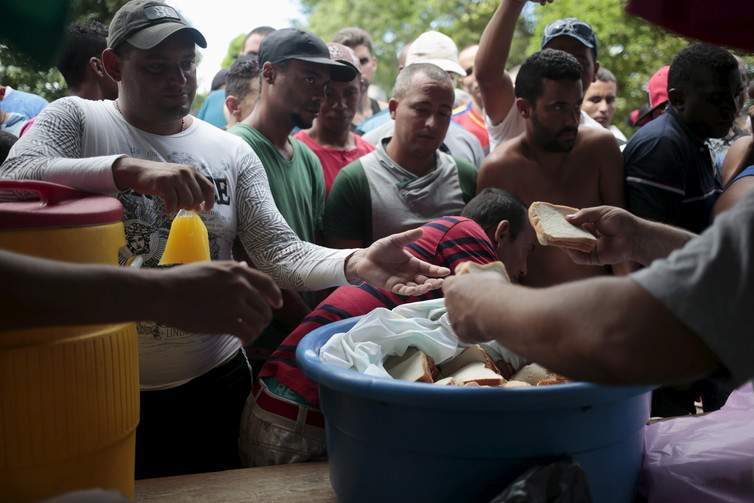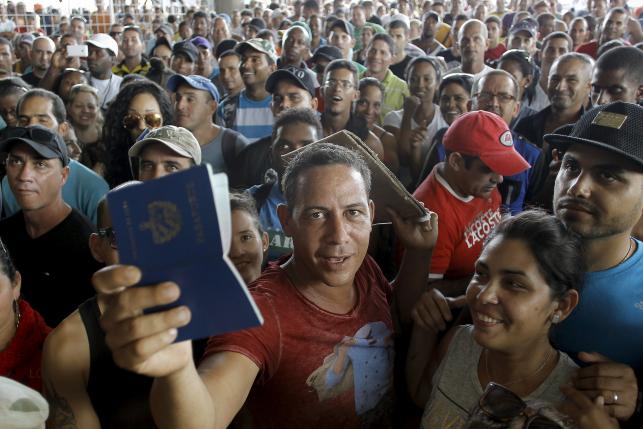Costa Rica News – For months Ronald Murillo overheard stories of murder and kidnapping told in hushed voices by the customers at his furniture store outside of San Salvador. So in September, when a tattooed teenager no older than 16 showed up to his store asking for cash in “collaboration” with the Barrio 18 gang that ran the neighborhood, he wasn’t surprised.
“They call it collaboration, but it’s extortion,” says Murillo, whose name has been changed for the safety of his family back in El Salvador. “And if you don’t pay, they threaten you, and if you still don’t pay, they kill someone in your family.”
He paid the money. The next time, he paid again. When he couldn’t pay anymore, he got online to research moving his family out of El Salvador. Murillo quickly ruled out the U.S. – a family member had died a year earlier along the treacherous trail north. Mexico, Honduras and Guatemala were too dangerous, he thought. He didn’t trust Nicaragua’s government. Finally, he stumbled upon a brochure for a Costa Rican refugee agency; it seemed like the only option.
Murillo and his family are in good company in Costa Rica, where applications for permanent refugee status have quadrupled since 2012, according to the Immigration Ministry. While the U.S. is temporarily closing its borders to refugees, Costa Rica – considered a leader in the treatment of refugees – has been accepting more. Most of these refugees come from El Salvador, Venezuela and Colombia and many, like Murillo, are fleeing increasing violence in their home countries.
Costa Rica’s welcoming of refugees is rooted in its history. Since abolishing its military in 1948, Costa Rica has been a rare stronghold of peace and stability in a region plagued by conflict. The country opened its doors to South Americans fleeing dictators in the 1970s and 80s, and has taken in significant numbers of Colombians displaced by guerrilla warfare for decades.
Due to this tradition, Costa Rica has developed one of the most comprehensive legal frameworks for refugees in the region, experts say. Costa Rica allows refugees two appeals if their applications are denied and gives them the right to work and attend school while their applications are processed. The country also has one of the most well-established integration programs in the region that helps refugees find jobs, start businesses and adapt to the new culture, according to refugee advocates.
“I got a lot of support through programs that helped me learn more about the country and how to make it mine,” says Dennis Castillo, a gay rights activist who fled Honduras for Costa Rica four years ago after his life was threatened and several fellow activists were killed. “Like any procedural process, it’s not easy, but it’s obvious that the government and civil society are working to make it easier.”
Because of this reputation, the United Nations refugee agency chose Costa Rica last year to serve as the intermediary country for a new protection transfer agreement with the United States. Though U.S. President Donald Trump’s executive orders on refugees and immigration have likely killed the deal, Costa Rica’s initial selection bolstered its refugee-friendly reputation.
“For its broad and solid legal structure, Costa Rica is considered a regional leader in the treatment of refugees,” says Valentina Duque with the UNHCR in San José. “But perhaps more important is that there has always been and remains today a clear political will to help protect refugees.”
This political will may soon be put to the test as Trump’s new hard line on immigration may begin to drive refugees who would have traveled to the U.S. to other countries like Costa Rica.
Last week, Trump signed a pair of executive orders calling for “extreme vetting” of refugees, the construction of a border wall and the end of a catch and release policy where refugee applicants apprehended at the border were released while awaiting their hearings.
While most measures were directed at refugees from the Middle East, one order also calls for the detention of refugees arriving to the U.S. while their applications are considered. It is unclear whether there are enough resources to immediately enact this policy. Such a plan would eventually affect the tens of thousands fleeing gang violence from El Salvador, Guatemala and Honduras – a region known as the Northern Triangle, which has the highest murder rate in the world.
“Increased and harsher U.S. enforcement will likely lead to more Central American [refugees] seeking protection in other countries in the region,” says Maureen Meyer, an immigration expert with the Washington Office on Latin America. “We have already seen a significant uptick in countries like Costa Rica and Mexico and this will likely continue.”
Costa Rica has received accolades not only for its treatment of refugees fleeing violence, but also for how it has welcomed migrants, many of whom pass through the country in search of better economic opportunities further north.
In 2016, more than 30,000 undocumented migrants crossed into Costa Rica, and the country is now receiving 100 migrants a day at its southern border. Despite their intentions to travel to the U.S., Nicaragua closed its borders to undocumented migrants in November 2015, trapping them in Costa Rica.
Rather than shut their border, the Costa Rican government has developed a system to register and control the flow of migrants, while building shelters and providing food to those stopped at the northern border. Though most migrants eventually find a way to move north, many remain in Costa Rica for months. While Costa Rica has received some donations aid from the U.S. to offset these costs, its resources are being stretched thin.
“We made a decision, a decision I am very proud of, to register these people passing into our country and to make sure they stay in good condition,” says Carmen Muñoz, Costa Rica’s vice minister of the interior. “It’s a responsibility that the government is taking very seriously.”
For Murillo and his family, the transition to life in Costa Rica has not been easy. He has struggled to enroll his youngest son in school and he still flinches when he sees Costa Ricans with tattoos – in El Salvador only gang members wear them. But, for the first time in months, he feels safe.
“It’s not perfect, but I don’t worry about getting shot when I walk down the street,” he says. “I truly believe there are opportunities for me here in Costa Rica.”
By Lindsay Fendt | Contributor, USNews.com


